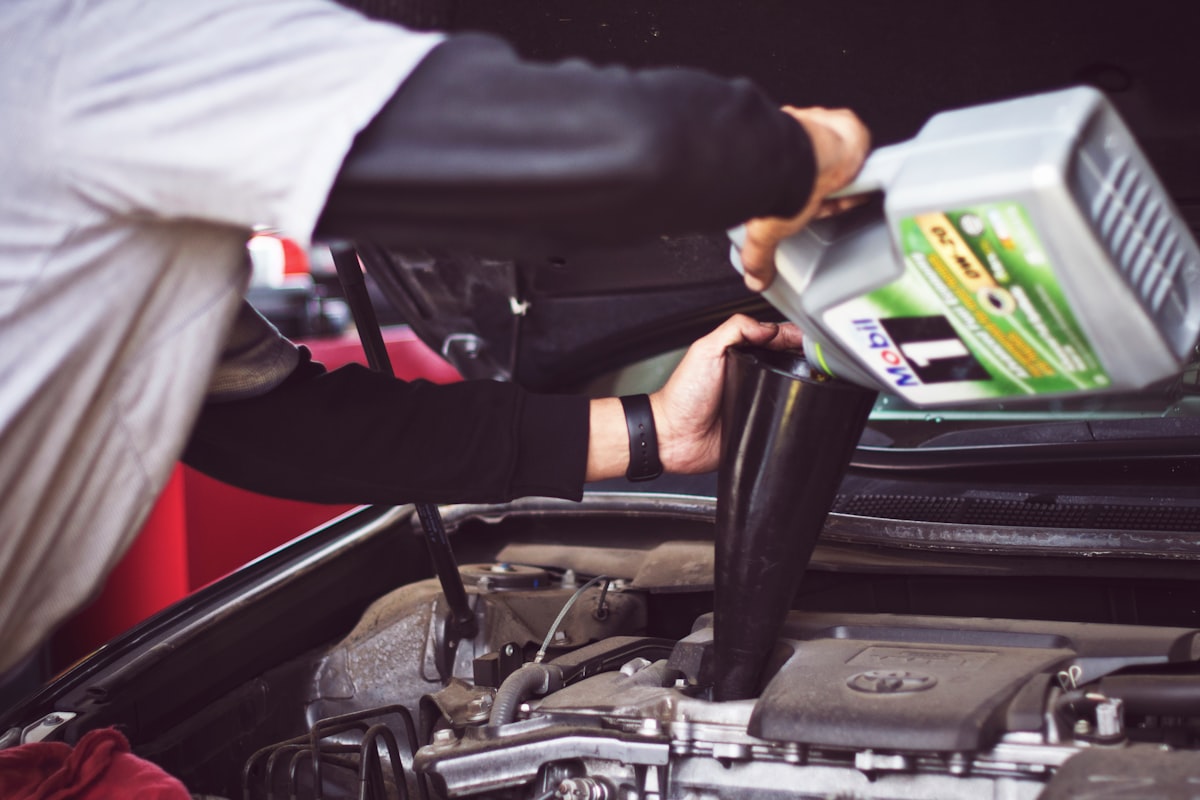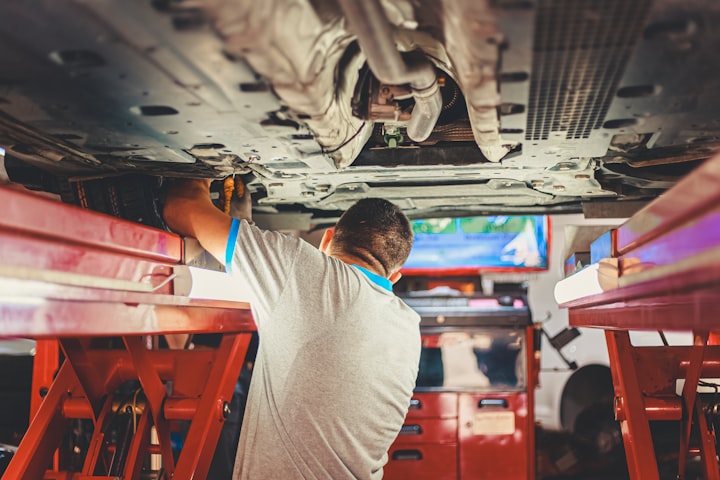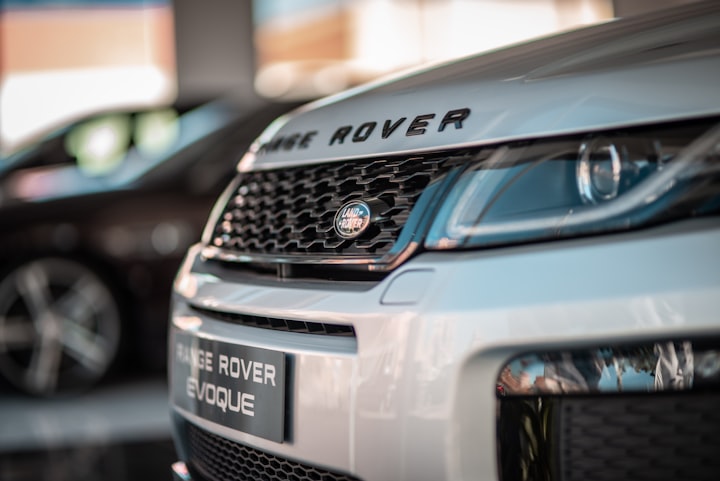Maintenance to do on all cars over 10 years old

Is your car approaching 10 years old? Or has it recently surpassed that age? If either of those are true, then you must add some of these wear and tear items onto your soon-to-do maintenance list.
With the average age of vehicles on the road reaching all-time highs, there are many vehicles owners, like myself, searching for the best way to keep them on the road longer.
The good thing for you is that you don’t have to be a mechanic wizard to do all of these repairs yourself. Just simply write these down and have your mechanic look these over on your next yearly inspection. With that inspection out of the way, you should be set for a while if you address some of the crucial items.
As a rule of thumb, these items are on the maintenance to-do list on all cars over 10 years old:
Must Replace List:
- Windshield Wipers
- Air and Cabin Filters
- Battery
- Tires
- Timing Belt
- Water Pump
Must Inspect List:
- Suspension components for leaks and rubber degradation
- Engine, Transmission and Differential for leaks or noises
- Coolant System to make sure they’re full of liquid
- Oil and filter if it has been 5,000 miles since the last change
- All belts and hoses for rubber degradation
Tips For 10 Year Car Maintenance
All of the above items should cover most things you should do for maintenance as your car approaches or surpasses 10 years old.
10-year-old car maintenance should include inspecting all things that are rubber, which is all the suspension bushings and any hoses or belts in the engine compartment. Following that, you want to make sure you address any leaks from your engine, transmission, differential, cooling system or shocks and struts. After that, look over the common wear-and-tear items like tires, battery, brakes, spark plugs and windshield wipers to round everything off.
This is not a comprehensive list for a pre-purchase inspection on a vehicle, so if you need that, check out this other post.
1. Windshield Wipers
For $20 and less than 20 minutes of your time, you can replace your own wiper blades with news ones. Trust me when I say this, once you replace these, it can help you get the ball rolling with other simple maintenance items and learn what it takes to take care of your car.
2. Air and Cabin Filters
After you’re done replacing your windshield wipers, you can move onto this other easy task of replacing your air and cabin filters. No need to head to the mechanic for this one, just another $20 and 20 minutes of your time and you should be all set.
3. Battery
If your car’s battery has not been replaced in 10 years, then it’s sure to be on its way out very soon. You don’t want to ignore this one too long since a dead battery can leave you stranded.
This is another item you can tackle yourself without the need for a mechanic. Just be sure you look up how to do so beforehand for your own safety.
While you’re here, be sure to also look at your battery cable connections to make sure they’re rust and corrosion free. If they do have rust or corrosion, you can use a simple hard bristle brush to clear that gunk from you cable connectors and terminals.
4. Tires
Depending on how you drive and the mileage you’ve taken on, you might’ve already replaced your tires once already. If you haven’t, then it’s recommended to replace them soon as you approach the 10-year mark.
Your tires are one of the most crucial safety aspects of your vehicle. They’re the ones that are constantly touching the road and maneuvering you about.
As your tires age, the rubber gets harder, and the tread life gets lower. You don’t want to find yourself with a blowout at high speeds, so be sure to address these soon.
One good way to check for your tire health is to look at the date codes on your tires to see how old they are and do the penny test to measure how much tread is remaining.
5. Timing Belt
For your timing belt, check your owner’s manual as it should state at what mileage or at what year this should be replaced.
Typically, this is either at 100,000 miles or about 10 years.
If this has not been addressed, and your engine is an interference engine, then having your timing belt snap at speed could cause serious problems to your engine. Even if your engine is not an interference engine, then it’s still a good idea to have this addressed.
6. Water Pump
A water pump is an integral part of your engine as it makes sure the coolant flows through and your engine doesn’t overheat.
This is often an item that gets replaced at the same time as a timing belt since it’s in the exact same area. Failure of this part could also lead to serious engine damage.
7. Suspension
Your car’s suspension is there to maximize your tire’s contact with the road surface, to provide steering stability and good handling, which leads to comfort and sportiness.
It’s made up of many parts including shock absorbers, struts, sway bars and control arms. What keeps most of these items together and functioning properly are rubber bushings and fluid or grease.
It’s important to inspect the rubber bushings and ball joints as these can degrade over time, like tires, and provide less comfort. Grease is held inside of ball joints, so when the rubber degrades, the grease can get contaminated and not function as intended.
Be sure to also check for leaks on the shocks/struts as that can indicate that they are close to needing to be repaired or replaced.
8. Engine, Transmission and Differential
One of the most overlooked aspects of car maintenance includes repairing any leaks coming from these three key components: the engine, transmission, and differential.
Your engine is most likely to leak oil around the valve cover indicating it needs it's gasket replaced. Not to be confused with a head gasket, which is a much more severe issue, a valve cover gasket replacement is something that is simple and less costly.
Excessive wear over time can also lead to your transmission leaking at 10 years. If you don’t see any leaks, then you’re good to go here (although it’s recommended to at least replace your transmission fluid at this mark). Doing so can lead to smoother shifts and have your car accelerating like new.
All cars have differentials, however, where it’s located depends on what type of vehicle you have. Front wheel drive vehicles have the differential at the front, rear wheels at the rear, and all wheel drive have them on both the front and rear. Like a transmission, if the differential is not leaking, then you can simply replace the fluid.
9. Cooling System
Your car’s cooling system keeps the engine cool during the summer and prevents it from freezing in the winter. If you’re not topped up on coolant, then be sure to do that. If there’s corrosion or deposits in the coolant, then it is best to flush and replace.
10. Oil and Filter
Believe it or not, some people go years and thousands of miles without ever replacing the oil and filter. Not doing so can lead to sludge build up in the engine, and engine failure if left unaddressed.
Keep tabs on what your manufacturer states in the owner’s manual for oil change intervals. Make sure both the oil and filter are changed at these intervals.
11. Belts and Hoses
Aside from all the items previously addressed, you’ll want to finally inspect any belts and hoses for cracks or frays. Belts and hoses are both made from rubber and at the 10-year mark, they may be due for replacement if they’re showing any wear signs.
This is not usually the case with many vehicles, but it’s always worth keeping a close eye on them as your vehicle gets older and older.
Like what you just read? Feel free to share this with your friends or on social media to keep the conversation going.




Comments ()